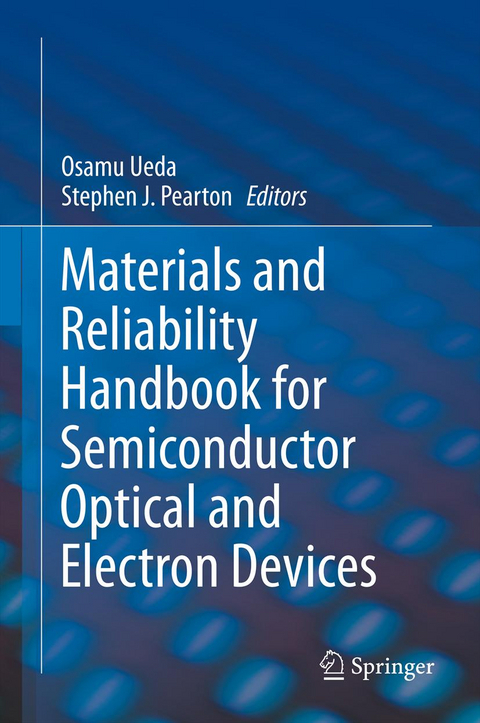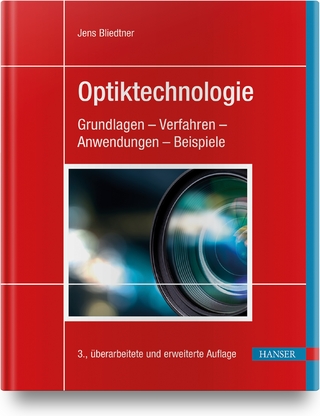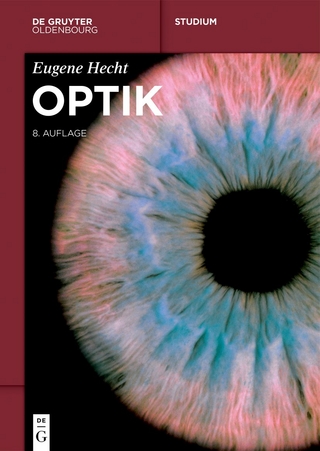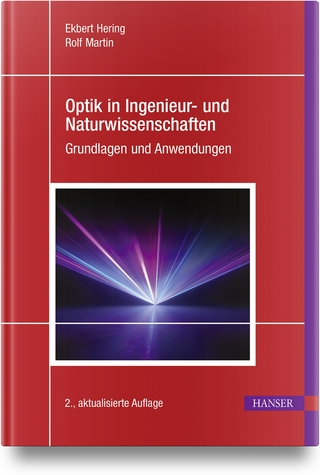
Materials and Reliability Handbook for Semiconductor Optical and Electron Devices
Springer-Verlag New York Inc.
978-1-4939-0119-7 (ISBN)
The Handbook addresses reliability engineering for III-V devices, including materials and electrical characterization, reliability testing, and electronic characterization. These are used to develop new simulation technologies for device operation and reliability, which allow accurate prediction of reliability as well as the design specifically for improved reliability. The Handbook emphasizes physical mechanisms rather than an electrical definition of reliability. Accelerated aging is useful only if the failure mechanism is known. The Handbook also focuses on voltage and current acceleration stress mechanisms.
Materials and Reliability Handbook for Semiconductor Optical and Electron Devices provides comprehensive coverage of reliability procedures and approaches for modern electron and photonic devices. These devices include lasers and high speed electronics used in all aspects of our lives, from cell phones to satellites, data transmission systems and displays. Lifetime prediction for compound semiconductor device operation is notoriously inaccurate due to the fragmented efforts in reliability and the absence of standard protocols. Manufacturers have usually relied on accelerated testing at elevated temperature and then extrapolated back to room temperature operation. This technique frequently fails for scaled, high current density devices. Device failure is driven by electric field or current mechanisms or low activation energy processes that are masked by other mechanisms at high temperature. Device degradation can be driven by failure in either active structures or passivation layers. The Handbook addresses reliability engineering for III-V device structures, including materials and electrical characterization, reliability testing, and electronic characterization. These last techniques are used to develop new simulation technologies for device operation and reliability, which in turn allow accurate prediction of reliability as well as the design of structures specifically for improved reliability of operation. Given that a relatively small percentage of devices will actually show failure, it is critical to both enhance the failure rate through accelerated testing and to treat the resulting reliability data correctly. For this reason, the Handbook emphasizes physical mechanisms rather than an electrical definition of reliability. In other words, accelerated aging is useful only if we know the failure mechanism. Also covered are standard Si reliability approaches to determine the instantaneous failure rate and mean time to failure and therefore the distribution functions of greatest relevance to the specific device technology. Furthermore, the Handbook focuses attention on voltage and current acceleration stress mechanisms.
Preface.- Part 1. Materials Issues and Reliability of Optical Devices.- 1. Reliability Testing of Semiconductor Optical Devices.- 2. Failure Analysis of Semiconductor Optical Devices.- 3. Failure Analysis using Optical Evaluation Technique (OBIC) of LDs and APDs for Fiber Optical Communication.- 4. Reliability and Degradation of III-V Optical Devices Focusing on Gradual Degradation.- 5. Catastrophic Optical-damage in High Power, Broad-Area Laser-diodes.- 6. Reliability and Degradation of Vertical Cavity Surface Emitting Lasers.- 7. Structural Defects in GaN-based Materials and Their Relation to GaN-based Laser Diodes.- 8. InGaN Laser Diode Degradation.- 9. Radiation-enhanced Dislocation Glide - The Current Status of Research.- 10. Mechanism of Defect Reactions in Semiconductors.- Part 2. Materials Issues and Reliability of Electron Devices.- 11. Reliability Studies in the Real World.- 12. Strain Effects in AlGaN/GaN HEMTs.- 13. Reliability Issues in AlGaN/GaN High Electron Mobility Transistors.- 14. GaAs Device Reliability: High Electron Mobility Transistors and Heterojunction Bipolar Transistors.- 15. Novel Dielectrics for GaN Device Passivation And Improved Reliability.- 16. Reliability Simulation.- 17. The Analysis of Wide Bandgap Semiconductors Using Raman Spectroscopy.- 18. Reliability Study of InP-Based HBTs Operating at High Current Density.- Index.
| Zusatzinfo | XVI, 616 p. |
|---|---|
| Verlagsort | New York |
| Sprache | englisch |
| Maße | 155 x 235 mm |
| Themenwelt | Naturwissenschaften ► Physik / Astronomie ► Optik |
| Technik ► Elektrotechnik / Energietechnik | |
| Technik ► Maschinenbau | |
| ISBN-10 | 1-4939-0119-2 / 1493901192 |
| ISBN-13 | 978-1-4939-0119-7 / 9781493901197 |
| Zustand | Neuware |
| Haben Sie eine Frage zum Produkt? |
aus dem Bereich


